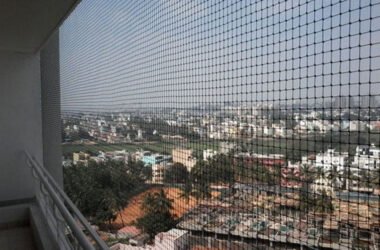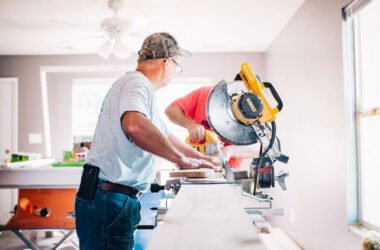Introduction
Your house may be unsafe because of break-ins, theft, fires, and digital hacks. Your home is no longer safe just because you close the door. We need modern technology, physical security, and being attentive. Security measures lower the danger and help you feel safer knowing that your family is safe. You need to be proactive, prepare, and have the necessary tools to protect your house now.
1. Smart Surveillance Systems
Installing smart surveillance systems is one of the best ways to keep your home safe right now. Modern security cameras come with Wi-Fi, smartphone applications, and cloud storage built in, unlike older CCTV systems. Homeowners may now see their property in real time from almost anywhere in the globe using a smartphone or computer.
Many smart cameras have motion sensors, night vision, and two-way audio, so families can not only see but also talk to anyone who is on their property. You can get fast warnings when strange activity is spotted, so you won’t miss any questionable behaviour. Surveillance cameras are an important part of home security since they may help catch criminals and give useful evidence in case of a break-in. Families seeking reliable protection can benefit from advanced Security Solutions UK providers offer today.
2. Motion-Activated Outdoor Lighting
Houses with well-lit exteriors deter burglars. In gloomy locations like driveways, corners, and entrances, motion-activated outdoor lighting illuminates. This sudden flash drives off intruders and alerts neighbours. Energy-efficient motion-activated floodlights are better for the environment than constant floodlights. Place them strategically around entry points, walks, and gardens for maximum coverage and minimal blind spots. For optimal results, smart home platforms can adjust brightness, timing, and sensitivity in some lighting systems. An adequate outside lighting deters trespassers and promotes visibility and safety.
3. Home Alarm Systems
Alarm systems have always been seen as an important part of home security, and new technology has made them even better. Modern alarm systems do a lot more than just sound loud alarms. They frequently have direct links to monitoring centres, which means that emergency services are contacted right away if there is a breach. Families can pick between wired and wireless systems.
Wireless systems are easier to install and provide you more alternatives. Many systems may now connect to cellphones, which lets users activate or disable alarms from anywhere and get warnings in real time. Glass break detectors, panic buttons, and pet-friendly motion sensors are some of the features that make security even better while reducing false alerts. A good alarm system not only keeps intruders out, but it also gives you a way to stay secure right away if someone breaks in.
4. Fire and Carbon Monoxide Detection
Not only does home security prevent crime, it also protects your family against fires and CO poisoning. Smoke and carbon monoxide alarms help identify these risks early. Modern detectors are networked. Thus, if one alarm goes out, all house alarms will sound. This networked system provides families crucial seconds to escape securely. Smart detectors can notify mobile devices to emergencies when away from home. These devices must be examined and replaced often to perform effectively. Homeowners can safeguard their families from the most lethal home risks by detecting fire and CO first.
5. Secure Perimeter Fencing and Gates
One of the most reliable ways to keep your house safe is using physical obstacles. Gates and fences that are secure help make it evident where the property ends and keep anyone from getting in without permission. A solid, tall fence constructed of long-lasting materials like metal or treated wood is a strong physical barrier that also gives you privacy. There is an extra level of control with automatic gates that include intercom systems or keypad entry. This makes sure that only people who are allowed to enter may do so. Adding security cameras or motion sensors along the edges of bigger properties makes them safer by spotting intruders before they get to the house. Fencing alone may not stop a determined invader, but it makes it much harder for them to get in and is a powerful first line of defence against trespassers.
6. Home Automation and Smart Integration
Smart home technologies have expanded home security options. Home automation solutions let you manage lighting, alarms, locks, and cameras from one spot. This connection makes it easy to set up safety routines like locking doors or turning on lights when someone approaches. Links to voice-activated assistants make security settings changes easier. Geofencing lets smart devices know when individuals leave or return. They adjust security settings as required. Home automation and security may make families safer. This way, they can prepare for any threats and handle them easily.
7. Cybersecurity for Smart Homes
Smart gadgets are connecting more homes, making cybersecurity crucial. Network hackers might access security cameras, smart locks, and other internet-connected devices, compromising privacy and safety. Families need greater digital barriers to avoid these hazards. Use strong passwords, two-factor authentication, and frequent software updates to secure your smart home. Wi-Fi networks are protected by encryption, firewalls, and antivirus software. Family members should only connect trustworthy and necessary devices to their home networks. As the globe becomes increasingly interconnected, homeowners safeguard their data and physical safety online.
8. Neighborhood Watch and Community Involvement
Working with neighbours is one of the finest but least discussed ways to make your home safer. A community watch program encourages individuals to report suspicious conduct and makes them feel accountable for each other. Community engagement is about protecting outsiders and strengthening neighbour relationships. It’s easier to recognise anything odd when you know and trust your neighbours. Many neighbourhood watch groups utilise messaging apps and internet forums to update members in real time. Working together to prevent crime may make areas safer. This indicates that shared safety is ideal.
Conclusion
Making a secure home requires time and more than one gadget or habit. A multilayered defence including technology, awareness, and planning is optimum. From a smart camera to an alarm to a family plan everyone follows, every solution helps make safety a habit. Providing a safe and secure family atmosphere is more vital than keeping away intruders or responding to disasters. Use contemporary security technologies and develop healthy practices to make your home more than walls and locks. The place becomes safe.









